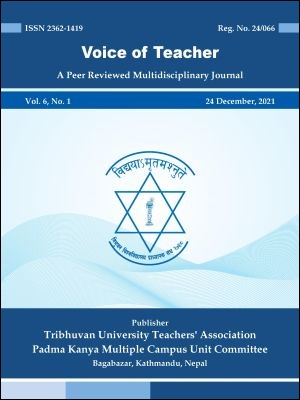Tantric Influence in 'Aripana' of Mithila
DOI:
https://doi.org/10.3126/vot.v6i1.44069Keywords:
aripana, feminine subjectivity, materialism, spirituality, tantra, yantraAbstract
This paper examines the influence of tantra in the aripana, a floor painting, of Mithila Region. The ancient tradition of floor painting expresses the philosophy of tantra, which lays a focus on the balance between the spiritual and material aspects of the world. The use of the tantric symbols, celebration of the bodily desires, recognition of the material aspects, and glorification of feminine power as a primal source in aripana shows the influence of Tantra in Maithili society, art, and culture. Mithila, a Hindu society, has the influence of patriarchal Vedantic civilization. The society observes Hindu religious practices and rituals, on the one hand, and develops its own faith, beliefs and value systems on the other hand that at times tend to contrast with the religious practices of the Indian subcontinent. However, Mithila has advanced a good balance between the religious and secular practices so as to seek meanings in their lives, that is, a good equilibrium between the spiritual and material realities of the world. The link of aripana in Mithila, solely a Hindu community, demonstrates the tantric tradition of worshipping ‘shakti’. Thus, Mithila Women through aripana highlights on the equal status of both the spirit and matter, initiating Human kind to attend their spiritual and material strength to its fullest. Despite the multi-facets of aripana in Mithila, it lacks proper study and research. The researcher aspects minimal bridging of research gaps and problem from this article entitled “Tantric Influence in ‘Aripana’ of Mithila”.




